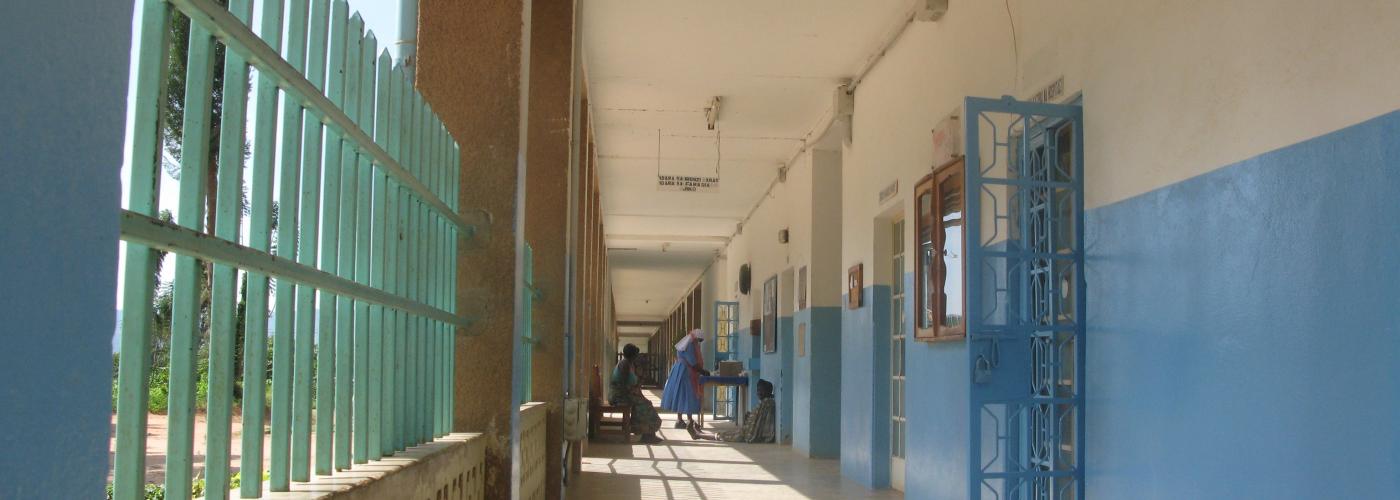Tanzania Looks to Blended Finance Solution for Hospital Network Modernization
Image

By Desmond Dodd, INVEST Communications
When Tanzania’s government recently began reducing funding, medical supplies, and staff available to faith-based hospitals, Peter Maduki quickly understood the stakes involved for his members.
“Some of our hospitals will be at a high risk of closing,” said Maduki, the Executive Director of the Christian Social Services Commission (CSSC), a national ecumenical organization that facilitates health services through member churches.
The hospitals in CSSC’s network have long delivered about forty percent of the country’s hospital care and today they serve more than half of the population outside the main urban centers. Their reach reflects the sense of mission among the hospitals to serve broadly and reach the poor and vulnerable population in the country.
“A woman who needs an ultrasound in a rural area might have to travel 50–60 kilometers if a local hospital were to close, and our roads are not good,” Maduki explained. “It is critical that we find new funding.”
The financial services needed haven’t kept up with recent policy changes. Commercial bank financing to Tanzania’s faith-based hospitals has historically been limited to large capital expenditures, like building construction or heavy equipment purchases. Today’s needs are different. These hospitals require more funds for operating expenses, to build robust supply chains, to purchase a wider range of equipment, and to improve systems that increase accountability and improve services.
Maduki is optimistic that blended finance can ease the transition by helping drive change toward affordable and flexible financing options for hospitals. To that end, USAID’s INVEST initiative has undertaken research and is conducting a process to attract new solutions that align private capital with the health sector’s financing needs.
Maduki observes that the process is also exposing needs that go beyond financing. A parallel mindset shift is required for the hospitals to adapt to the new circumstances.
A New Landscape
A government shift diverting resources to newly constructed hospitals threatens the sustainability of faith-based hospitals. They initially relied on government funding. Yet a growing population and the geographic spread of faith-based hospitals ensures a large and new potential role for the CSSC network hospitals.
“The government alone doesn’t have the capacity to deliver all care to Tanzanians,” Maduki said. He notes that the extensive reach of the faith-based hospitals along with the trust created over many years can’t be replicated overnight.
That opens an opportunity for CSSC hospitals to improve the quality of their services to distinguish them from public facilities, and to use their independent status to innovate and modernize patient service and care.
That’s where the new mindset comes in.
According to Gene Peuse, Senior Public Private Partnership Advisor at USAID Tanzania, these 105 faith-based private hospitals became over-reliant on service agreements with the government. Under the old model, they faced little pressure to create rigorous and transparent systems and practices that lenders require to make new financing available.
Peuse said that management teams are slowly but increasingly acknowledging the need to do things differently, while balancing change with their traditional role.
“They haven’t forgotten their mission to serve the poor,” Peuse said. The process is now underway to ensure they pay more attention to modernizing their businesses so that they can keep delivering on that important mission.
Tailoring Solutions to Changing Conditions
A 2020 INVEST review of the situation facing the faith-based organization hospitals found that the declining funding from government sources is already creating the need for hospitals to access more cash to maintain ordinary operations. A rapid solution is needed.
Currently, commercial bank financing feels out of reach for the hospitals. Their interest rates of between 17–24% seem daunting. From the banks’ perspectives, FBO hospitals appear particularly risky because often they can’t provide clear business plans, banking records, or audited financials.
Taking into account the conditions on the ground, the INVEST team is putting options on the table that could address these issues, such as a special purpose investment vehicle that could deliver quickly and lay a foundation for the market to develop further. The next step is for a transaction leader identified through USAID INVEST to build a financing structure and operating model in which stakeholders like CSSC, donors, commercial banks, and guarantee providers can participate.
Left to their own devices, the local banks would not extend credit to FBO hospitals at the pace required to keep up with the reduction in funding, medical supplies, and staff. USAID INVEST support for this effort will test a new financing solution that uses donor funds to improve transparency. In turn, the solution will attract commercial financing and demonstrate the viability of investing in FBO hospitals.
“Blended finance is needed because the funding that banks want to offer is not aligned with what the FBO hospitals need,” said George Ruhago, an INVEST Rapid Assessment Advisor. He explained that a new approach is needed that allows hospitals to access funding from smaller, less formal institutions, such as microfinance credit, that would be partially guaranteed by a special purpose vehicle.
“Gradually if they do well, they can start to take bigger loans” including from commercial banks, said Ruhago.
The outcome from USAID INVEST support is expected to be a new revolving fund that addresses the long-term credit gap faced by the hospitals. That revolving fund is expected to endure after USAID INVEST support concludes next year. While donor funding provides the catalyst, the market-based approach creates the conditions for ongoing expanded financing for FBO hospitals long after the donor funding will be completed.
New Business Mindset
If a short-term solution to the cash crunch can be found, hospital boards and management can focus on several areas that may create access to much more future funding.
“The hospitals will need to begin accounting for everything,” said Ruhago.
To that end, hospital leadership will need to begin implementing improved financial management practices through electronic cash collection and payment systems.
Professionalizing accounting and business planning are also on the agenda so that audited financial statements can be produced and business growth is managed by a clear strategy.
“We are still trying to figure this out. We have learned that initially it’s two steps forward, one step back,” said Maduki.
Hospitals need to tailor their systems and reporting to the new source of funding. Hospitals are learning that they need new skills internally, including on their boards, to help them on this new journey.
Alongside the design of a new financing vehicle, the transaction leader selected by USAID INVEST will work with CSSC to support hospitals to build new capacity in operations and financial management.
Maduki believes that the hospitals in his network are indispensable to the country’s health care, providing incentives for hospital leadership to come to terms with the new realities of commercially oriented funding sources.
“If banks and other financial institutions don’t support our hospitals, people won’t be able to get quality services,” said Maduki.
“This is the right time” for new solutions, said Maduki, “And we are ready.”


